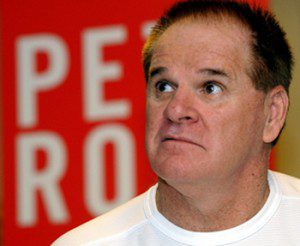
Did you ever play with sparklers as a kid? The little, four-inch long metallic wands that seem to only appear at picnics and barbecues? They were always a highlight for me at the annual fourth of July party at my Grandma’s house. I wasn’t allowed to light firecrackers, so I had to wait until somebody lit a sparkler for me, instead.
As a sparkler burns, you can write your name and draw pictures in midair. It’s fun while it lasts, but it never lasts for too long. And when it burns out, you better be sure to put in in water right away, because they remain extraordinarily hot until you do. I found this out the hard way once.
Why am I using this analogy? The heat and sparks of a sparkler describe what the past 48 hours have been like for me. Only this time, I was the one that set the sparkler alight.
It started a few weeks ago when I purchased a box of 2013 Topps Baseball cards. It was a snowy and cold day, and I wanted to bring a reminder of spring into it. I opened up the packs, admired the design of the cards and looked for interesting things to comment about. And boy, did I ever find one.
On the back of each card of this year’s base set (a term I still don’t like because, back in the late 1970s, everything was part of the base set) is a new feature called the Career Chase line. On that line, Topps informs us of how many wins, saves, strikeouts, home runs or some other apparently random statistic a player has, and how many more they need to get in order to reach the all-time record. The career leaders are identified, such as Cy Young with 511 wins, Mariano Rivera with 608 saves, and so on.
But the problem comes in with the hits record. We learn, for some players, how many career hits they have, and how many more they need to reach the career record of 4,256. But Topps does not say who got that many hits in his career. Whether that’s because MLB won’t allow them to isn’t really the point. Topps left me with the impression that it wasn’t even worth discussing, and it was a “simple” thing to leave his name off the cards.
The piece I wrote appeared on ChicagoSideSports on Wednesday, and was also printed in the Sports section of the Chicago Sun-Times. The piece argued that it was not that simple, since Rose actually did get all of those hits. The lifetime ban on Pete Rose — including the ban on admission to the Hall of Fame — should not allow Topps to rewrite history to suggest that Rose did not get those hits.
Perhaps you already knew this, but the story took off like a rocket. I told myself it wouldn’t reach 200 Facebook Likes, and it did. It’s currently over 1,100 Likes. I found myself refreshing the page over and over on Wednesday, watching as the number of “Likes” and retweets kept on climbing.
And then the story went viral. We use the word “viral” a lot in this digital age, but now I understand what that means:
- seeing your name in hyperlinks
- getting beaten up by people in the comments section of the USA Today
- being scorned by card collectors who resent the fact that it’s your words and not theirs being read and talked about
- seeing your story appear in the LA Times, and Sports Illustrated, and a hundred other places
- hearing that your story leads to discussions on sports talk radio shows
- knowing that you started a national discussion about a topic you care deeply about
It feels overwhelming, and it has to be appreciated while it lasts, because just like a sparkler, it burns hot until it burns out. If Pete Rosemakes a statement of some sort, which I don’t think he has just yet, then the story will go on for a bit more, but otherwise there will be other stories bubbling up to take its place. So shall it always be.
During this process, I learned Pete Rose is baseball’s fault line. Those who remember his play can tell you that nobody in today’s game can match the intensity of Charlie Hustle. He loved the game and respected the game, and we respected him for that. We even loved him, but only if he was playing for our team.
To see Rose on the outside looking in, as he has been since 1989, is a sad thing for those who remember him as a player. Yes, he bet on games, and yes, he should be punished for that. But reaching back into his playing career is not the way to do that. Topps’ Career Chase line lists Barry Bonds at the career Home Runs leader with 762. For Mr. Cream (and Clear) to be named, while Rose has to remain as baseball’s Voldemort by not being named at all, is terribly wrong. It doesn’t matter if that was Topps’ call or MLB’s call.
If MLB and Topps had treated Bonds like they treated Rose, it might be one thing. But they haven’t done this. Bonds’ home run numbers, like Mark McGwire‘s and Sammy Sosa‘s and Rafael Palmeiro‘s and Alex Rodriguez‘s, are forever tainted by steroids use. Rose’s hit record is not. No matter what you think about gambling on baseball, it didn’t help Rose to get a single hit. It’s still wrong, but let’s be clear on that. Pete Rose accumulated 4,256 hits without the aid of any PEDs that we know of. So, that record must not be tampered with.
People love baseball, and they’re still passionate about Pete Rose after all these years. And out of respect for that passion, MLB and Topps must not be allowed to remove him from the game altogether.
